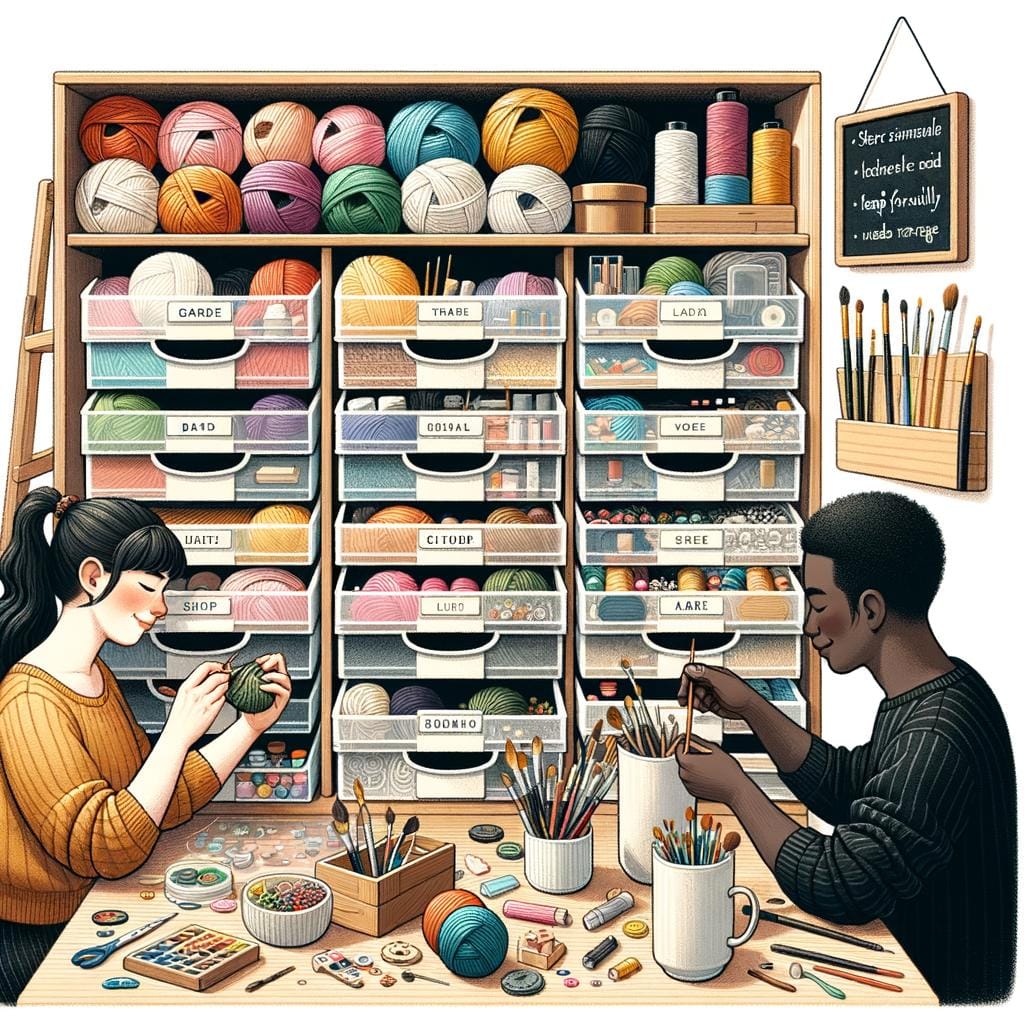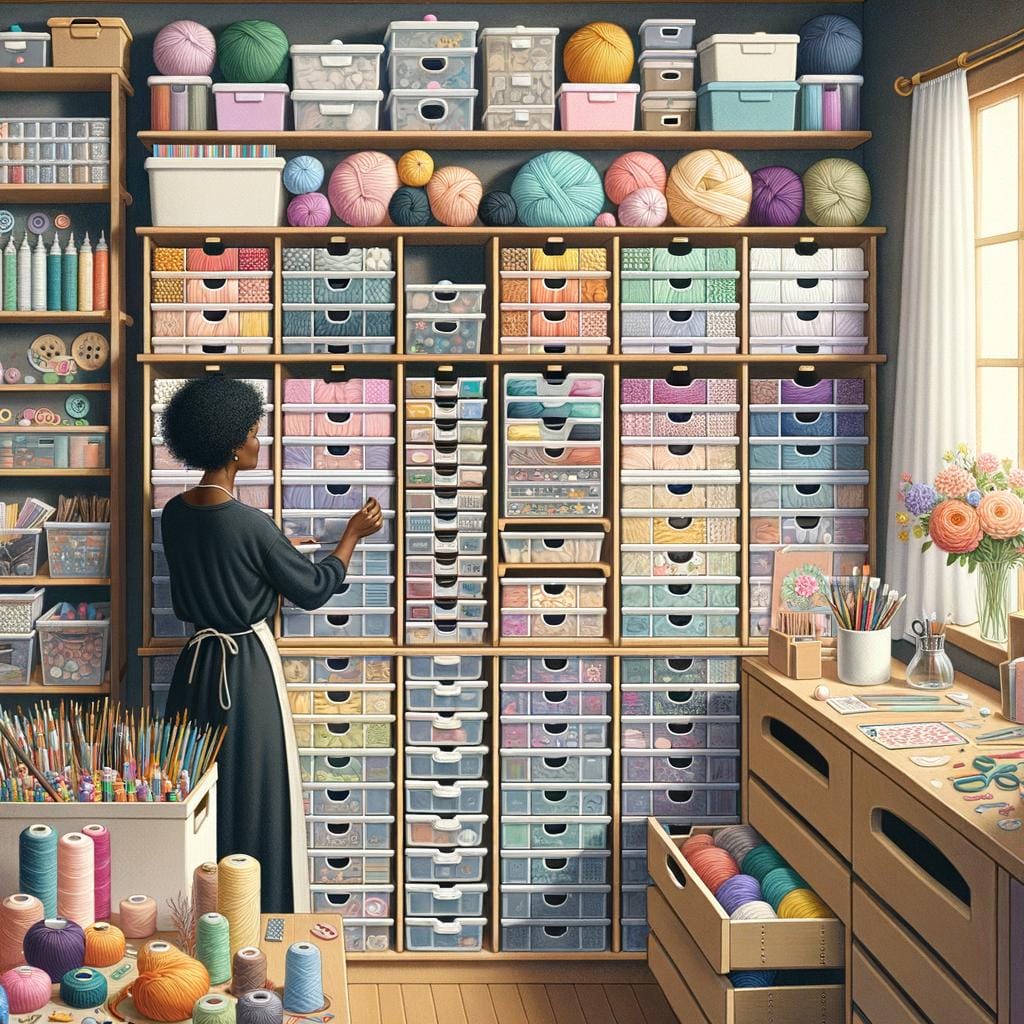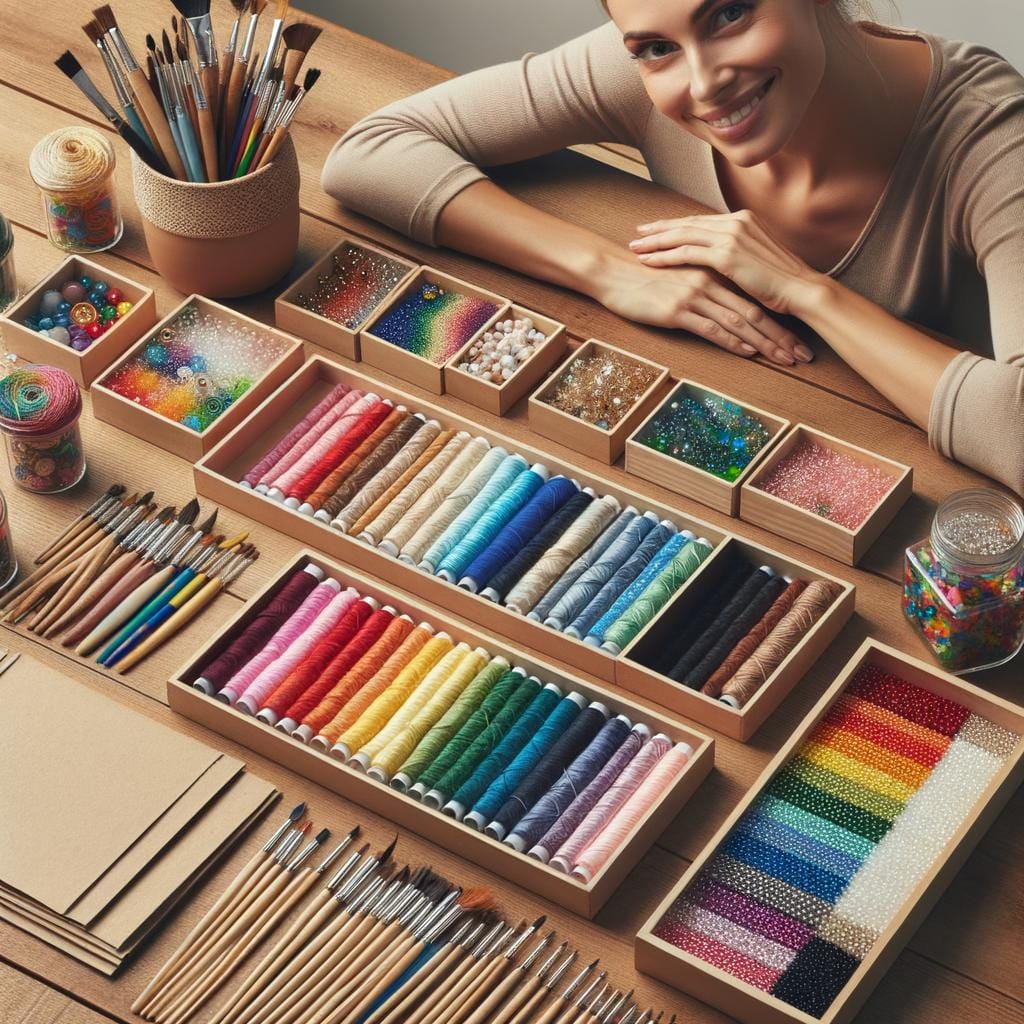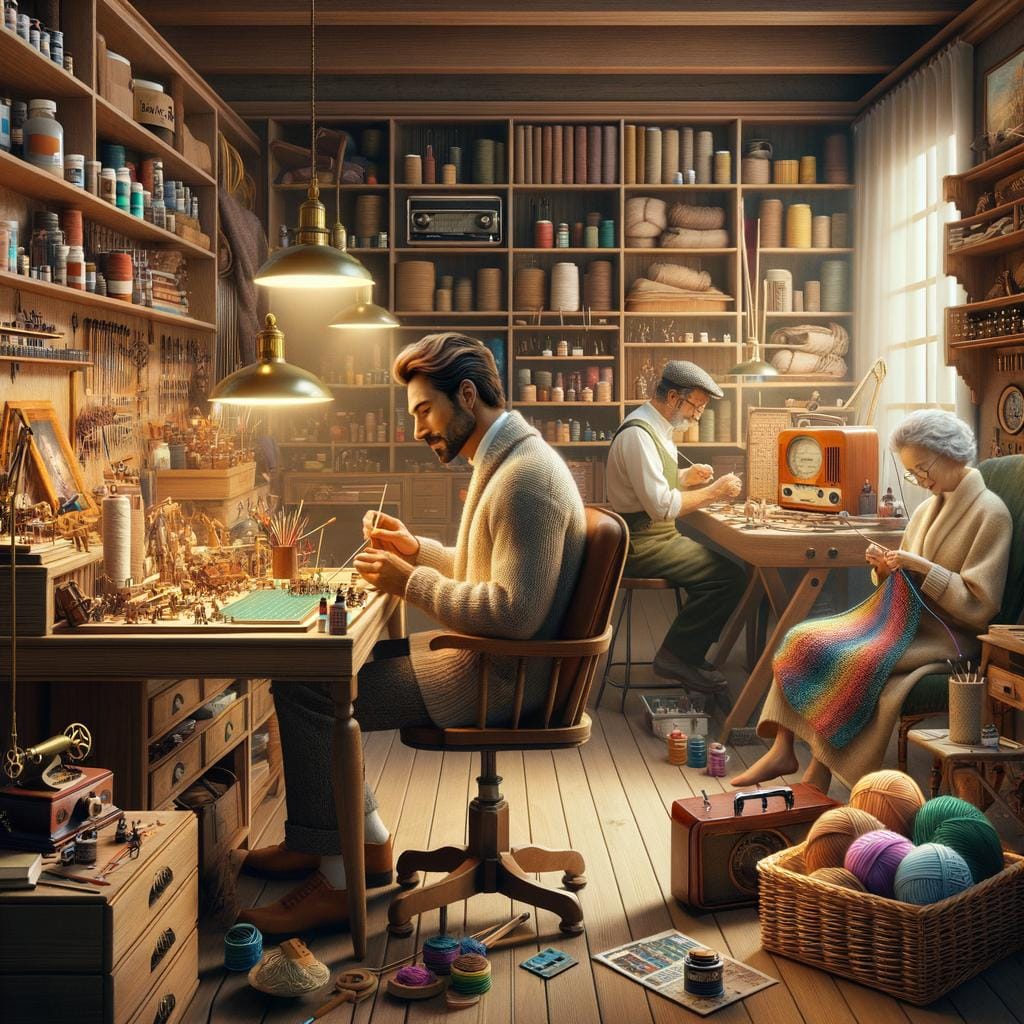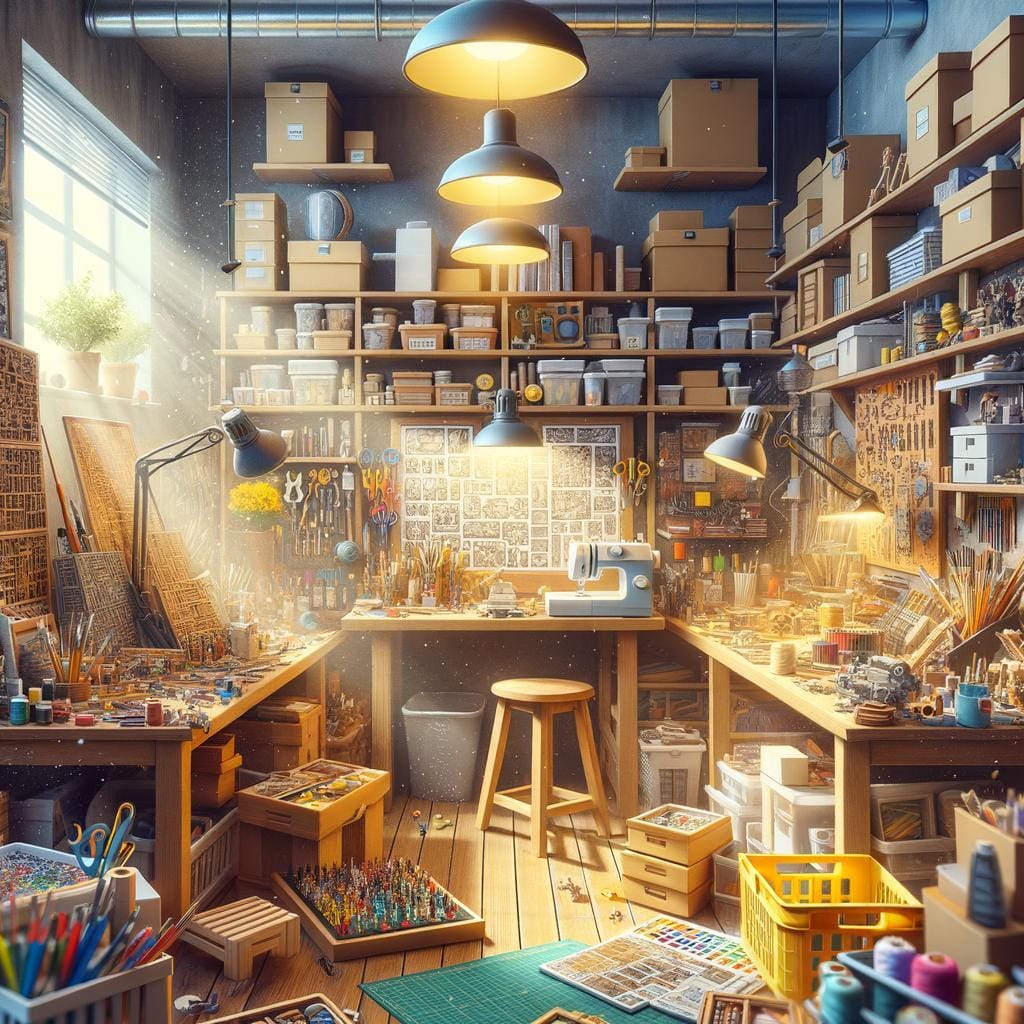Craft Room Cleanup Tips – Keeping your craft room clean and organized is essential for a smooth creative process. A clutter-free space can enhance productivity, creativity, and overall enjoyment of your crafting activities. In this article, we will explore various strategies and techniques to help you streamline your craft room cleanup process.
A messy craft room not only hinders your ability to work efficiently but can also be overwhelming and stressful. Assessing the mess in your craft room is the first step towards creating a functional workspace. By evaluating the current state of your craft room, you can identify areas that need decluttering, reorganization, or storage solutions.
Decluttering strategies play a crucial role in maintaining a tidy craft room. Getting rid of unnecessary items, organizing supplies, and creating designated spaces for different materials are key components of effective decluttering. With the right techniques, you can optimize your space and make it easier to find the tools and materials you need for your projects.
Assessing the Mess
Take Inventory
Before diving into a craft room cleanup, it’s essential to take inventory of all your supplies, tools, and materials. Go through every shelf, drawer, and container to see what you have and assess which items you actually use. Make a list or create categories to help organize your inventory efficiently. This process will give you a clear picture of what needs to stay and what can be donated, sold, or discarded.
Identify Problem Areas
As you evaluate your craft room, identify specific problem areas that contribute to the clutter. Are there certain corners or surfaces that tend to accumulate more mess? Are there supplies scattered everywhere due to lack of proper storage? By pinpointing these troublesome spots, you can prioritize cleaning and organization in those areas first. Taking note of these issues will also help you come up with targeted solutions during the decluttering process.
Assess Workflow Efficiency
Another crucial aspect of assessing your craft room is evaluating its workflow efficiency. Take note of how you move around the space while working on projects. Are your frequently used supplies easily accessible?
Is there enough workspace for crafting comfortably? Consider rearranging furniture or storage units to create a more functional layout that enhances productivity and creativity. By analyzing your workflow within the craft room, you can make informed decisions on how to optimize the space for better use and organization.
Decluttering Strategies
Evaluate Your Craft Supplies
Before diving into decluttering your craft room, take inventory of all your supplies. Separate them into categories such as paper, fabric, embellishments, tools, etc. This will give you a clear picture of what you have and what you may no longer need.
Ask yourself if each item sparks joy or if it serves a purpose in your current projects. Be honest with yourself and set aside items that you haven’t used in the past year or are no longer in good condition.
Donate or Sell Unused Items
Once you have identified the items you no longer need or want, consider donating them to a local school, charity, or crafting group. You can also sell them online through platforms such as Etsy, eBay, or Facebook Marketplace. Not only will this free up space in your craft room, but it will also give these items a chance to be loved and used by someone else who may find them valuable.
Create a “Maybe” Box
For those items that you’re unsure about keeping or getting rid of, create a “maybe” box. Place these items in the box and store it away for a set period of time (e.g. 6 months).
If during that time you don’t find yourself reaching for anything in the box or missing these items, then it’s a sign that they can be donated or sold. This method allows you to declutter gradually without feeling overwhelmed by making immediate decisions about every item in your craft room.
Storage Solutions
When it comes to organizing your craft room, storage solutions play a crucial role in maximizing space and keeping clutter at bay. One of the most effective ways to store craft supplies and tools is by utilizing vertical space.
Install shelves, pegboards, or hanging organizers on the walls to free up valuable floor space. Clear containers, bins, and jars are also great storage options as they allow you to easily see what’s inside without having to dig through a messy drawer.
Another creative storage solution for craft rooms is repurposing everyday items for organization. Consider using mason jars for storing buttons, washi tape, or small embellishments. Old shoe boxes can be covered with decorative paper or fabric to create customized storage containers for ribbons, yarn, or fabric scraps. By thinking outside the box and repurposing items you already have, you can save money on expensive storage solutions while adding a unique touch to your craft room.
For larger crafting supplies such as rolls of paper, cutting mats, or fabric bolts, consider investing in furniture pieces that offer both storage and functionality. Look for tables with built-in shelves or drawers, armoires with adjustable shelves, or rolling carts with multiple compartments.
These furniture pieces not only provide ample storage space but also help keep your craft supplies organized and easily accessible. Remember, the key to an efficient craft room is finding storage solutions that work best for your crafting needs while maintaining a visually appealing space.
| Vertical Storage | Repurposing Everyday Items | Functional Furniture |
|---|---|---|
| Utilize wall shelves | Use mason jars for small items | Invest in tables with built-in shelves |
| Hang organizers on walls | Cover shoe boxes for custom containers | Consider armoires with adjustable shelves |
Organizational Systems
Another important aspect of organizing your craft room is to create designated work areas within the space. Have specific areas for cutting, painting, sewing, and assembling so that each activity has its own dedicated space. This not only helps in keeping your work isolated but also prevents clutter from spreading all over the room.
Investing in furniture with built-in storage solutions can also greatly contribute to the organization of your craft room. Choose desks or cabinets with drawers and compartments where you can neatly tuck away supplies when not in use. Additionally, consider using pegboards or wall-mounted shelves to maximize vertical storage space and keep frequently used items within reach.
| Craft Room Organization | Data |
|---|---|
| Categorize Craft Supplies | Separate items into different groups such as paper, fabric, tools, and embellishments |
| Create Designated Work Areas | Have specific areas for cutting, painting, sewing, and assembling |
| Utilize Furniture with Storage Solutions | Choose desks or cabinets with drawers and compartments for neat storage |
Cleaning Routine
Keeping a clean and organized craft room is essential for a productive and enjoyable crafting experience. Establishing a regular cleaning schedule is key to maintaining order in your creative space. By incorporating routine cleaning habits into your crafting practice, you can prevent clutter from accumulating and ensure that your craft room remains a functional and inspiring environment.
To help you stay on top of the cleanliness of your craft room, consider implementing the following tips:
- Set aside dedicated time each week to clean and tidy up your craft room. This could be an hour or two depending on the size of your space.
- Start by clearing off surfaces such as work tables, shelves, and storage units. Put away any tools or supplies that are not in use to free up workspace.
- Wipe down surfaces with a gentle cleanser to remove dust and debris. Don’t forget to dust shelves, cabinets, and storage containers as well.
In addition to basic cleaning tasks, it’s important to regularly assess the organizational systems in your craft room to ensure they are still effective. Consider rearranging storage solutions if necessary to optimize space and make items easily accessible. By establishing a cleaning routine that includes evaluating and adjusting your organizational setup, you can maintain order in your craft room for efficient crafting sessions.
Remember that consistency is key when it comes to keeping your craft room clean and organized. By incorporating regular cleaning habits into your crafting routine, you can create a welcoming environment that fosters creativity and productivity. Utilize these craft room cleanup tips to establish a sustainable cleaning schedule that works for you.
Decor and Inspiration
Decorating your craft room is not just about adding aesthetic appeal, but also about creating a space that inspires and motivates you to be creative. By incorporating elements that speak to your personal style and preferences, you can turn your craft room into a haven for creativity. Here are some tips for decorating your craft room to boost creativity and motivation:
- Choose a color scheme that energizes you: Selecting colors that resonate with you can have a significant impact on your mood and productivity. Consider incorporating vibrant hues like turquoise, yellow, or coral to add a pop of color to your craft room.
- Display inspirational quotes or artwork: Surround yourself with words of encouragement and inspiration by hanging up motivational quotes or displaying artwork that ignites your creative spark. This visual stimulation can help keep you motivated during crafting sessions.
In addition to decor elements, consider the layout and functionality of your craft room. Keep essential tools and materials within reach by setting up designated workstations for different crafting activities. A well-organized space not only enhances efficiency but also promotes a positive mindset while working on projects.
- Create a cozy seating area: Incorporate a comfortable chair or sofa in a corner of your craft room where you can relax and brainstorm ideas. Adding throw pillows or blankets in soft fabrics can make the space feel inviting.
- Personalize the space with meaningful decorations: Infuse your personality into the decor by showcasing items that hold sentimental value, such as handmade creations, family photos, or souvenirs from special moments. Surrounding yourself with cherished objects can foster a sense of connection to the space.
Ultimately, decorating your craft room is an opportunity to reflect your unique identity and create an environment that fuels your passion for crafting. By infusing creativity into every aspect of the design, you can transform your workspace into a place where ideas flow freely and inspiration abounds. Embrace this process as an integral part of maintaining a motivating and inspiring craft room atmosphere.
Maintenance Tips
In conclusion, maintaining a clean and organized craft room is crucial for maximizing creativity and productivity. By implementing the various craft room cleanup tips discussed in this article, you can ensure that your space remains clutter-free and inspiring for all your creative endeavors. Assessing the mess, decluttering, finding storage solutions, establishing organizational systems, following a cleaning routine, and adding personal touches through decor are all key components in creating a functional and efficient craft room.
To prevent your craft room from becoming cluttered again, consistent maintenance is essential. Set aside time each week to tidy up and put things back where they belong. Make use of labeled containers and shelves to easily find and store supplies. Keep track of inventory to avoid unnecessary purchases or overcrowding of items. By staying proactive in keeping your craft room organized, you can focus more on crafting and less on searching for tools or materials.
Remember that maintaining a clean craft room is an ongoing process. Don’t be discouraged by the occasional mess or clutter – instead, take it as an opportunity to reassess your organization systems and make improvements as needed. With dedication and these craft room cleanup tips in mind, you can create a space that not only sparks creativity but also reflects your passion for crafting.
Frequently Asked Questions
How Do You Clean a Cluttered Craft Room?
Cleaning a cluttered craft room can be overwhelming, but it’s important to start by sorting through the items and deciding what to keep, donate, or discard. Organizing shelves, bins, and containers can help maximize space and make it easier to find supplies when needed.
How Do You Declutter and Organize a Craft Room?
Decluttering and organizing a craft room involves assessing your storage needs and investing in furniture pieces like shelving units, pegboards, and drawer organizers. Grouping similar items together can create a more efficient workspace, while labeling containers helps you quickly locate materials.
How Do You Declutter When You’re a Crafter?
Decluttering as a crafter requires making tough decisions about which supplies are essential and which ones can be eliminated. It’s helpful to create designated areas for different types of crafts and regularly assess whether certain items are still being used or are just taking up space.

Hello, I’m April Denton, your go-to expert for all things home decluttering and organization. With over a decade of experience helping individuals transform their living spaces into serene, clutter-free sanctuaries, I am passionate about the life-changing benefits of decluttering. My journey into the world of organization began out of necessity, juggling a busy career and a bustling household. I quickly realized that a well-organized home was the key to a more balanced, stress-free life.

